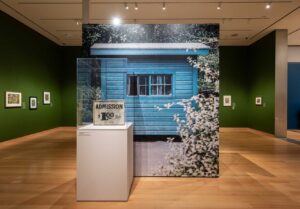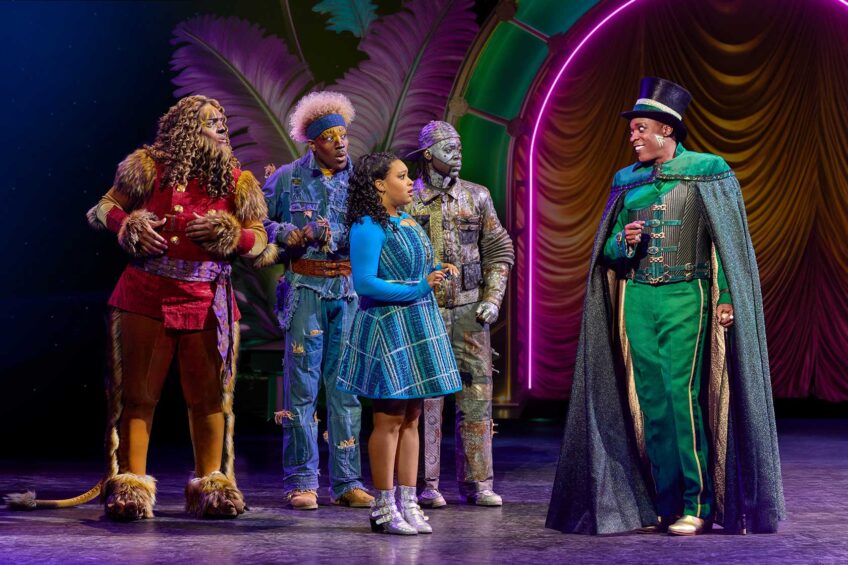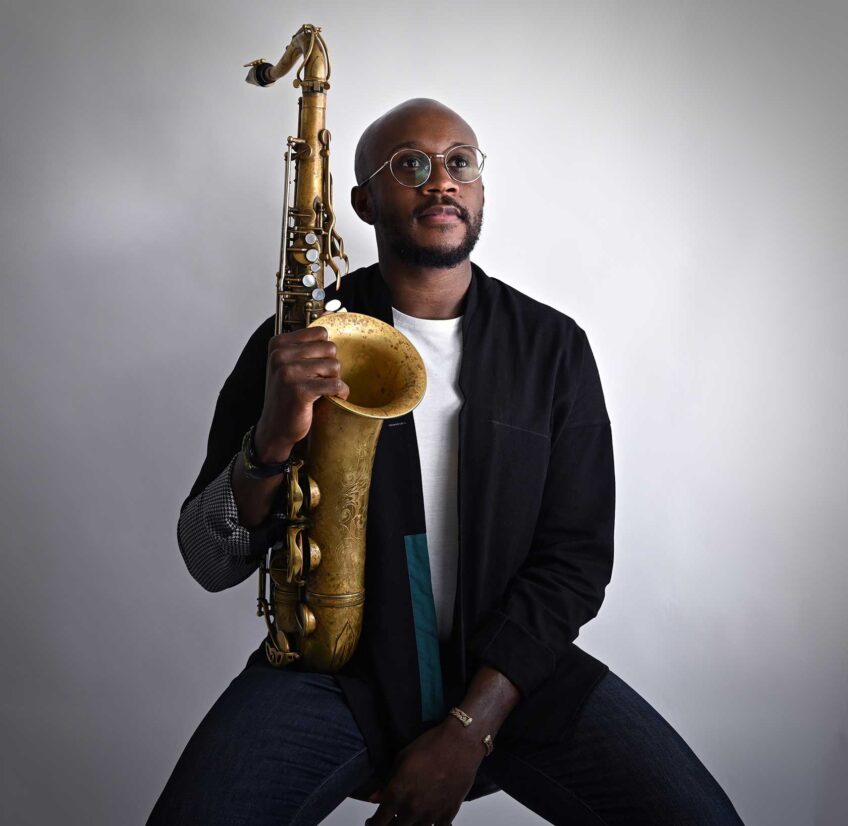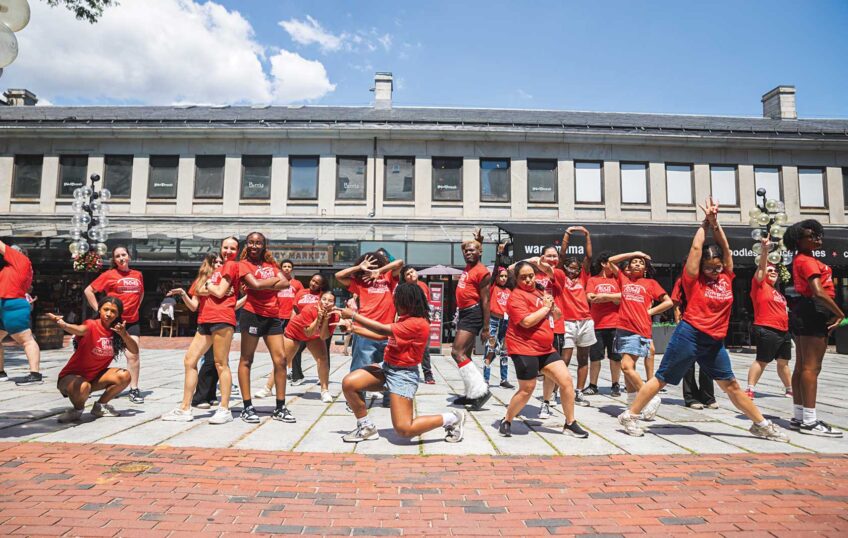An artist and gatekeeper, inspired by gardens and God
‘The Visionary Art of Minnie Evans’ at MFA Boston through Oct. 26

In a small wooden cube of a room — a gatehouse, painted blue — American artist Minnie Evans (1892-1987) found a studio in which, while earning 16 cents an hour from morning to dusk over her 27-year post as gatekeeper of the Airlie Gardens in Wilmington, North Carolina, she turned out thousands of visionary images. They reflect the natural splendor surrounding her as well as her vivid internal life, and she sold many to visitors for modest sums.
Sixteen of her works are on view through Oct. 26 in a beguiling exhibition at the Museum of Fine Arts, Boston titled “The Visionary Art of Minnie Evans.” Evocative of Tibetan mandalas in their intricacy and jewel-like tones, they are on loan from the Cameron Museum in Wilmington, the artist’s hometown.
Her post at the 67-acre Airlie Gardens served as a long-term artist residency favorable to the artist, who cultivated a steady stream of clients as well as daily immersion in its manicured abundance of local flora and fauna, including its renowned azaleas, magnolias and wisteria. The garden’s original owners, Sarah Jones and Henry Walters, founder of the Walters Art Museum in Baltimore, had first employed Evans as a domestic worker on their estate and encouraged her interest in their Asian art collections, early influences that later seeped into her paintings as mythical figures and elaborate, symmetrical patterns.

“The Visionary Art of Minnie Evans” exhibition at the Museum of Fine Arts, Boston, Edward and Nancy Roberts Family Gallery. PHOTO: © MUSEUM OF FINE ARTS, BOSTON
The succeeding owner of the Airlie Gardens, Walter Corbett, collected her work and featured her in the garden’s visitor brochure. On view, the vintage document states, “The gatekeeper at Airlie Gardens is Minnie Evans, a granddaughter of slaves, who has received international recognition for her primitive paintings,” and details the prestigious venues and publications that presented her works.
The brochure, dated from the 1970s, is among the displays that accompany the images to evoke the setting in which Evans lived and created her works, including a wall-size mural of weeping willows and azaleas; letters in her handwriting addressed to collectors and gallerists; postcards from the 1900s that show Wilmington’s downtown, beach, lake and tree-lined avenues; and a five-minute video interview with a scene of her singing in the choir of Wilmington’s St. Matthew’s AME Church. The footprint of the video viewing area matches the dimensions
of the gatehouse.
Evans worked at the behest of no less than a divine mandate. “God tells me,” Evans would reply to interviewers asking her how she came to be an artist. Many of her inventive, ecstatic images may be considered visual psalms that give praise to God. A keen observer of nature, she said “Green is God’s theme color … He has painted
everything green — 600 and some shades of green.”
A straight line is visible in just three of the 16 images on view. Instead, intricate curving shapes intertwine that illustrate or evoke forms in nature. Hand-drawn and rendered in wax crayon, graphite, oil and shimmering metallic paint, they are populated by an array of earthly creatures—butterflies, birds and insects—as well as celestial figures from the Bible’s Book of Revelation as well as occult sources such as tarot cards. Details are often iridescent—such as the shimmering wings of a peacock in a 1962 image.
A modernist in her depiction of faces, Evans brings humans into her images with minimalist curves that show a person’s eyes, nose and lips. And real-world events of African American history in Wilmington make their way into images that show eyes peaking from behind foliage—an allusion to the 1898 white supremist coup d’etat in Wilmington that overturned an elected mixed-race government and killed more than 200 residents. Thousands of Black residents had fled into the city’s surrounding woodlands for safety.
“My work is just as strange to me as to anyone else,” Evans once told an interviewer. The latest work on view is an untitled drawing Evans sketched with a marker pen while living in a long-term care facility. A scramble of colored lines, it serves as an expression of her fidelity to her calling that she continued to her last year of life.






